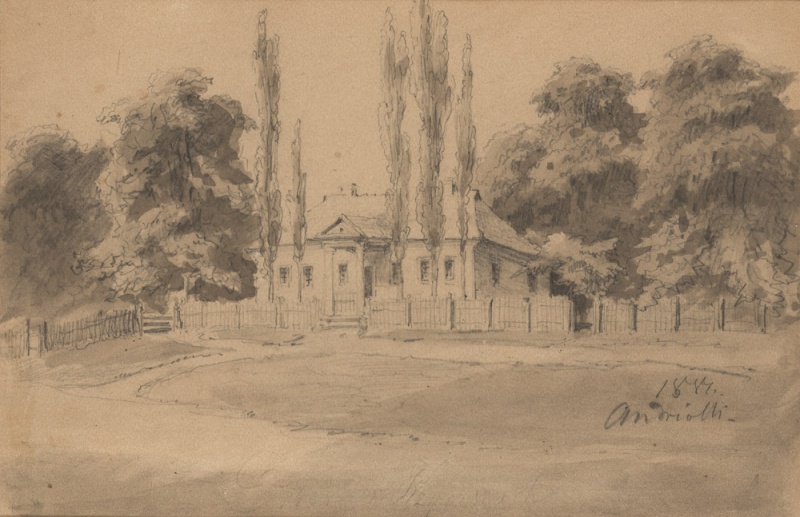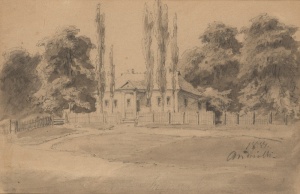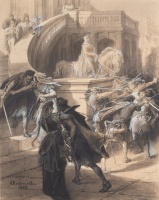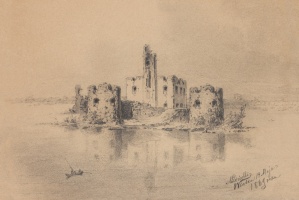

A manor house
| Author: |
Michał Elwiro Andriolli (1836–1893)  |
| Created: | 1881 |
| Material: | paper |
| Technique: | pencil, ink |
| Dimensions: | 16.50 × 25 cm |
| Signature: | bottom right: 1881./ Andriolli |
One of the most popular subjects in 19th-century landscapes were the estates of the gentry that dotted the Lithuanian and Polish countryside. Their moderate, single-storey houses, with a Classical pediment supported by small columns (hinting gently at the popularity of Classical art that was brought by the Enlightenment and left its mark on architecture), nestling among old trees behind plain wooden fences, to many were associated with the ideal of the life of the gentry. These estates and their occupants were depicted in literature and in songs. They reminded many local artists of their own family homes, because many youths who opted for the life of an artist (or painter or poet) came from similar small estates, where ideas of love for the homeland and service to people were nurtured, and where hopes of liberation from oppression and the creation of a better future were cherished. Travelling around the country, Michał Elwiro Aandriolli (1836–1893) had plenty of opportunities to record these estates. In the absence of specific information about the location depicted in the drawing, it is impossible to say whether it was produced during a short stay, or whether it was a place of some significance to the artist. However, the work should be considered as another attempt to capture a typical aspect of the life of the gentry that was soon to disappear.
Text author Rūta Janonienė
Source: Law firm Valiunas Ellex art album RES PUBLICA (2018). Compiler and author Rūta JanonienėExpositions: "The Age of Romanticism", 11 September 2019 – 6 August 2020, Lithuanian Art Centre TARTLE (Užupio St. 40, Vilnius). Curator Rūta Janonienė.









